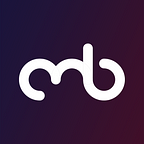How does a skincare giant smooth out the wrinkles of organizational change?
Galderma uses the MBTI® to navigate major change management initiatives
Skincare company Galderma uses the MBTI® assessment, both Step I and Step II, in their leadership development courses as well as in team dynamics.
They’ve implemented the tool globally to create a common language for building a number of training programs. And currently, everyone at the VP, director, and management level has taken the assessment.
“With five to six hundred people having completed the assessments, we’re seeing a real shift in the language being used in the culture. And that’s exactly what we wanted,” says Mary Kennedy, Associate Director for Leadership Development at Galderma.
“Particularly within our leadership development programs, we’re seeing a real influence with people talking about preference type and how they’re using it to change the way they manage their teams.”
Creating a self-aware culture that understands and values differences
“It starts with self-awareness,” says Kennedy.
“We typically will tie it in personally first so we get them to understand why their behaviors with their families are a certain way, or why their relationships with their spouses are a certain way. They tend to make the connection very quickly to people they’re managing at work, and begin to understand, for instance, why they’re struggling to communicate with certain individuals.”
A culture that appreciates type-based differences, it turns out, paid off tremendously when the company underwent a major exercise in change management.
Up until recently, Galderma was a division of the Nestle food and beverage corporation. When the global company decided to sell Galderma they made the announcement several months in advance of the sale, which is highly unusual for an organization of that size.
“This generated tremendous appreciation, as some people would need the information well in advance to be able to process it and let it settle,” said Kennedy. “The level of communication to Galderma employees that was achieved during the transition, on a global scale, was phenomenal.”
According to Kennedy, this approach gave Galderma employees time to process the decision. Since they had the ability to take in the information at their pace, they felt much better about the change. As a result, she reports, the company did not see the kind of attrition rate that typically comes along with such moves. Despite the major changes, the company was able to move forward with a ‘business as usual’ attitude.
“People stuck around, and their decision was validated by the fact that the things that were promised by the company materialized,” said Kennedy.
One of the most important things that this strategy bought for Galderma was time. Specifically, they had time to leverage their MBTI learnings to communicate the upcoming changes to people the way that they prefer to be communicated to.
Instead of a blanket approach that reflects the personality preferences of top leadership, they were able to tailor the approach to the personality types of workers who were wondering how their lives would be impacted. Understanding of personality type provided a framework for discussing change with people on an individual level.
“I’ve used the MBTI assessment for 30 years and, having personally seen how it impacted the way I deal with individuals in my own life, I knew that it would have that impact with others if we gave it an opportunity,” said Kennedy.
The value of using the real MBTI, and using it the right way
According to Kennedy, the company was using other assessments within the organization when she came in. These other quizzes were all based on the theories of Jung — but weren’t the actual, research-validated MBTI instrument. She felt, however, that their needs would be better served by using the actual MBTI assessment, due to its validity and the wealth of supporting resources behind it.
The leadership team was supportive of this decision, and within a very short period of time they made the decision to globally make all HR business partners MTBI certified.
When it came to discussing all things related to personality type, the MBTI’s language would be the language of choice going forward.
“One of the fundamental things to understand is that we made a conscientious decision to use the MBTI the right way — not as a hiring, disciplinary or placement tool, but as a way to understand the dynamics of your workforce better,” said Kennedy. “Additionally, ensuring that those who administer it get the proper certifications is important to avoiding missteps.”
“The data behind it, reinforced by knowing that the validity is there, should make you feel comfortable that you’re doing the right thing,” Kennedy concluded. “You can’t argue with history and the success that I’ve seen, not just in my organization but other organizations.”
Check out the Galderma video case study here.
